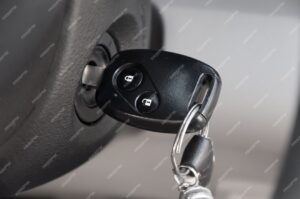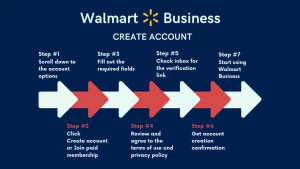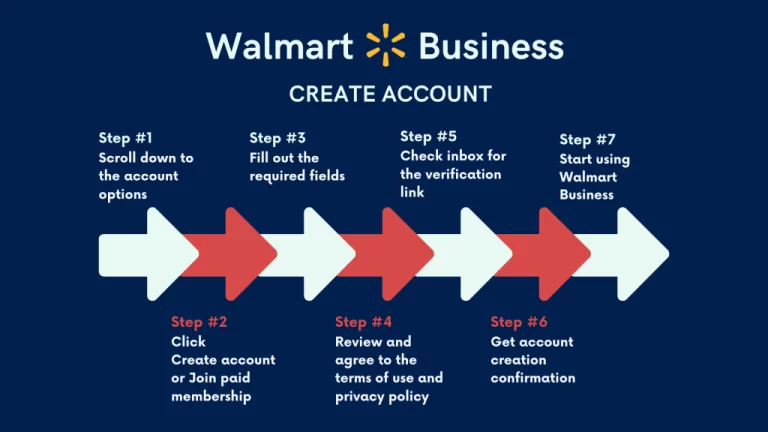Fuel Pump Filter Cleaning Made Easy: Step-by-Step Guide
Fuel pump filters are an essential component of any vehicle’s fuel system. They ensure that contaminants and debris are removed from the fuel before it enters the engine. However, over time, these filters can become clogged with dirt and debris, which can cause your engine to run poorly or even fail. Fortunately, cleaning your fuel pump filter is a simple process that can be done at home with just a few basic tools. In this step-by-step guide, we will show you how to clean your fuel pump filter properly. We will cover everything from identifying the filter to removing and cleaning it, so you can get your vehicle back on the road in no time. With our easy-to-follow instructions, you’ll be able to keep your fuel system running smoothly and efficiently.
1. Introduction to fuel pump filter cleaning
Introduction to fuel pump filter cleaning
The fuel pump filter plays a crucial role in the functioning of your vehicle’s fuel system. Over time, contaminants such as dirt, debris, and rust can accumulate in the filter, obstructing the flow of fuel and causing various issues. Regularly cleaning the fuel pump filter is essential to maintain optimal performance and prevent costly repairs.
In this step-by-step guide, we will walk you through the process of cleaning your fuel pump filter, ensuring that you can tackle this task with confidence. Whether you are a seasoned mechanic or a DIY enthusiast, following these instructions will help you keep your fuel system in top shape.
Before delving into the cleaning process, it is essential to understand the importance of the fuel pump filter and how it affects your vehicle’s performance. The filter acts as a barrier, capturing impurities and preventing them from reaching the engine. By doing so, it safeguards the fuel injectors and other critical components, prolonging their lifespan.
Over time, the filter can become clogged, restricting the flow of fuel and causing engine misfires, reduced power, and even stalling. By regularly cleaning the fuel pump filter, you can remove these contaminants and ensure uninterrupted fuel flow, thereby optimizing your vehicle’s performance and fuel efficiency.
Cleaning the fuel pump filter may seem like a daunting task, but with the right tools and knowledge, you can accomplish it successfully. In the following sections, we will guide you through the necessary steps, highlighting key precautions and providing helpful tips along the way.
Remember, proper maintenance of your vehicle’s fuel system is crucial for its longevity and optimal performance. So, let’s dive into the step-by-step process of cleaning your fuel pump filter and get your vehicle running smoothly once again.
2. Importance of regular fuel pump filter maintenance
Regular fuel pump filter maintenance is crucial for the smooth operation and longevity of your vehicle’s engine. The fuel pump filter serves as a gatekeeper, preventing contaminants such as dirt, debris, and rust particles from entering the fuel system. Over time, these impurities can accumulate and clog the filter, obstructing the flow of fuel and compromising the engine’s performance.
When the fuel pump filter becomes dirty or clogged, it can lead to various issues. Reduced fuel flow can result in engine misfires, stalling, hesitation, and even complete engine failure. Additionally, a clogged filter can cause the fuel pump to work harder, leading to premature wear and potential damage.
By regularly maintaining the fuel pump filter, you can avoid these costly and inconvenient problems. Regular cleaning or replacement of the filter ensures that fuel is flowing freely, allowing the engine to operate at its optimal level. This not only improves performance but can also enhance fuel efficiency.
Moreover, regular maintenance of the fuel pump filter is essential for preserving the overall health of the fuel system. By preventing contaminants from reaching sensitive components like the fuel injectors and fuel pressure regulator, you can prevent potential damage and avoid costly repairs down the line.
In conclusion, the importance of regular fuel pump filter maintenance cannot be overstated. By taking the time to clean or replace the filter at recommended intervals, you can ensure the smooth operation of your vehicle’s engine, improve performance, enhance fuel efficiency, and prolong the lifespan of the fuel system.
3. Understanding the signs of a clogged fuel pump filter
A clogged fuel pump filter can cause a host of issues with your vehicle’s performance. It’s crucial to understand the signs that indicate a potential problem with your fuel pump filter. By recognizing these signs early on, you can take proactive measures to clean the filter and ensure optimal fuel flow.
One of the most common signs of a clogged fuel pump filter is a noticeable decrease in fuel efficiency. If you find yourself visiting the gas station more often than usual or experiencing a sudden drop in mileage, it might be an indication that your fuel pump filter needs cleaning.
Another telltale sign is difficulty starting your vehicle. A clogged fuel pump filter restricts the flow of fuel to the engine, causing starting issues and even stalling. If you notice prolonged cranking or your engine sputtering before it starts, it’s essential to inspect and clean the fuel pump filter.
Additionally, a lack of power or acceleration can be attributed to a clogged fuel pump filter. If you find your vehicle struggling to reach higher speeds or experiencing sluggishness during acceleration, it’s time to consider the possibility of a clogged filter.
Furthermore, an illuminated check engine light can serve as a warning sign. While this indicator can point to various issues, a clogged fuel pump filter is often a culprit. It’s recommended to have your vehicle’s onboard diagnostic system scanned to identify any potential trouble codes related to the fuel system.
By familiarizing yourself with these signs of a clogged fuel pump filter, you can take timely action and avoid further damage to your vehicle. Regular maintenance and cleaning of the fuel pump filter will promote efficient fuel flow, ensuring your vehicle runs smoothly and performs optimally.
4. Tools and materials needed for cleaning the fuel pump filter
When it comes to cleaning the fuel pump filter, having the right tools and materials is crucial for a successful and efficient process. Before diving into the task, gather the following items to ensure you have everything you need:
1. Safety gloves: Protecting your hands is essential during any maintenance task, including fuel pump filter cleaning. Invest in a pair of quality safety gloves to shield your hands from any potential hazards.
2. Safety goggles: Fuel can be volatile, so it’s important to protect your eyes from any splashes or spills. Wear safety goggles to safeguard your vision throughout the cleaning process.
3. Screwdriver: Depending on the type of fuel pump, you may need a screwdriver to remove any screws or fasteners that secure the filter housing. Make sure to use the appropriate size and type of screwdriver for your specific fuel pump.
4. Cleaning solution: Prepare a cleaning solution to effectively remove dirt, debris, and accumulated residue from the fuel pump filter. You can use a commercial fuel system cleaner or create your own mixture using recommended products.
5. Soft brush: A soft-bristled brush is ideal for gently scrubbing the filter and removing stubborn deposits. Avoid using abrasive brushes or materials that could damage the filter.
6. Clean cloth: Keep a clean cloth or rag nearby to wipe off any excess cleaning solution, dirt, or debris from the filter and surrounding area. This will help ensure a thorough and tidy cleaning process.
7. Container or tray: Have a container or tray ready to catch any fuel or cleaning solution that may spill during the removal and cleaning of the fuel pump filter. This will help minimize mess and make cleanup easier.
By having these tools and materials readily available, you’ll be well-prepared to tackle the task of cleaning your fuel pump filter. Remember to follow safety precautions throughout the process and consult your vehicle’s manual for any specific instructions or recommendations.
5. Step 1: Preparing the vehicle for filter cleaning
Before diving into the process of cleaning the fuel pump filter, it is crucial to properly prepare your vehicle. This step ensures a safe and efficient cleaning process, minimizing any potential risks or complications.
First and foremost, park your vehicle on a flat surface and engage the parking brake. This will prevent any unintended movement during the cleaning procedure. Safety should always be a top priority when working on your vehicle.
Next, locate the fuel pump fuse or relay in the fuse box. Consult your vehicle’s manual if you are unsure about the exact location. Once found, remove the fuse or relay to disable the fuel pump. This step is essential to avoid any fuel pressure while handling the filter.
After disabling the fuel pump, start the engine and allow it to run until it stalls. This is vital to alleviate any remaining fuel pressure in the system. Once the engine stops, turn off the ignition and disconnect the battery to eliminate any electrical power.
To further ensure safety, put on protective gloves and safety goggles. Fuel is a highly flammable substance, and taking precautions will prevent any mishaps.
Lastly, gather all the necessary tools and equipment for the filter cleaning process. This may include a socket wrench set, a container for fuel drainage, cleaning solvent, and a new filter if needed. Having everything readily available will save time and make the process smoother.
By taking these preparatory steps, you are setting the stage for a successful fuel pump filter cleaning. It is essential to prioritize safety and ensure that the vehicle is properly prepared before proceeding with the subsequent steps.
6. Step 2: Locating the fuel pump and filter
Step 2: Locating the fuel pump and filter
Before you can start cleaning the fuel pump filter, you need to locate it in your vehicle. The fuel pump and filter are typically found together, usually inside or near the fuel tank.
To locate the fuel pump and filter, you may need to consult your vehicle’s manual or do some research specific to your make and model. In most modern vehicles, the fuel pump and filter are located underneath the vehicle, near the rear axle or in the trunk area. However, the exact location can vary.
Once you have a general idea of where the fuel pump and filter are located, you can proceed to access them. Depending on your vehicle, this may involve removing a cover or panel, or accessing them from underneath the car. It’s important to take necessary safety precautions, such as wearing safety goggles and working in a well-ventilated area, as you will be working with flammable substances.
If you’re unsure or uncomfortable with locating the fuel pump and filter yourself, it’s always a good idea to consult a professional mechanic who can guide you through the process or perform the cleaning for you.
Remember, proper maintenance and cleaning of the fuel pump filter is crucial for the optimal performance and longevity of your vehicle. So, take your time to locate the fuel pump and filter accurately before proceeding to the next step.
7. Step 3: Removing the fuel pump filter
Step 3: Removing the fuel pump filter
Now that you have gathered all the necessary tools and have taken the necessary safety precautions, it’s time to dive into the process of removing the fuel pump filter. This step is crucial as it allows you to access and clean the filter thoroughly, ensuring optimum performance of your vehicle’s fuel system.
1. Locate the fuel pump: The fuel pump is typically located inside the fuel tank, so you will need to access it by either removing the fuel tank or accessing it through an access panel, depending on your vehicle make and model. Refer to your vehicle’s manual or consult a professional mechanic for specific instructions.
2. Disconnect the fuel lines: Before removing the fuel pump, it is essential to disconnect the fuel lines attached to it. Using a fuel line disconnect tool, carefully detach the lines from the fuel pump. Be cautious as fuel might spill during this process, so be sure to have a catch basin or absorbent material ready to minimize any mess.
3. Remove the pump assembly: With the fuel lines disconnected, you can now remove the pump assembly from the fuel tank. This can usually be done by unscrewing the retaining ring or removing the bolts that secure the assembly in place. Gently lift the pump assembly out of the fuel tank, being mindful of any attached wires or connectors.
4. Locate and remove the fuel pump filter: Once the pump assembly is out, you will find the fuel pump filter attached to it. The filter may be inside a housing or attached directly to the pump. Carefully detach the filter from the assembly, ensuring not to damage any surrounding components.
5. Inspect and clean the filter: Take a close look at the fuel pump filter for any signs of clogs, debris, or damage. If the filter appears dirty or clogged, it is essential to clean it thoroughly. Use a suitable cleaning solution and a soft brush to gently remove any dirt or debris buildup. Ensure that the filter is completely dry before reinstalling it.
6. Reinstall the fuel pump filter: Once the filter is clean and dry, it’s time to reinstall it back into the pump assembly. Make sure it is securely attached and properly aligned with the pump assembly to ensure proper functioning.
By following these step-by-step instructions, you can easily remove the fuel pump filter, clean it, and reinstall it, ensuring that your vehicle’s fuel system operates efficiently. Regular maintenance of the fuel pump filter will help prolong its lifespan and prevent any potential issues caused by clogs or debris. Remember to consult your vehicle’s manual or seek professional assistance if you encounter any difficulties during the process.
8. Step 4: Inspecting and assessing the condition of the filter
Step 4: Inspecting and assessing the condition of the filter
Once you have successfully removed the fuel pump filter, it’s time to inspect and assess its condition. This step is crucial to determine if the filter needs cleaning or if it needs to be replaced altogether.
Start by visually examining the filter for any signs of dirt, debris, or clogging. Look closely for any discoloration, excessive buildup, or damage. A dirty or clogged filter will appear dark and may have particles trapped within its mesh.
Next, use a flashlight or a magnifying glass to thoroughly inspect the filter. Pay attention to any tears, cracks, or signs of wear and tear. These can indicate that the filter is no longer functioning effectively and needs to be replaced.
If the filter appears to be dirty but still in good condition, it can be cleaned. However, if it is severely clogged or damaged, it is recommended to replace it with a new one to ensure optimal performance.
In addition to visual inspection, you can also perform a flow test to assess the filter’s functionality. This involves blowing air through the filter or using a low-pressure air compressor to check if air passes through freely. If there is any resistance or blockage, it indicates that the filter is not working as it should and needs attention.
Remember, regular inspection and maintenance of the fuel pump filter are essential to prevent engine problems and ensure the smooth operation of your vehicle. By carefully assessing the condition of the filter, you can make an informed decision on whether to clean or replace it, ultimately prolonging the lifespan of your fuel system.
9. Step 5: Cleaning the fuel pump filter
Step 5: Cleaning the fuel pump filter
Cleaning the fuel pump filter is a crucial step in maintaining the optimal performance of your vehicle. Over time, the fuel pump filter can become clogged with debris, dirt, and contaminants, which can hinder fuel flow and cause engine problems. Cleaning the filter regularly helps ensure that your fuel system operates smoothly and efficiently. Here’s a step-by-step guide to help you clean the fuel pump filter effectively:
1. Safety first: Before starting any maintenance work on your vehicle, it’s essential to prioritize safety. Park your car in a well-ventilated area, away from any open flames or heat sources. Make sure the engine is off and cool to the touch.
2. Locate the fuel pump: The fuel pump is typically located inside the fuel tank. Refer to your vehicle’s manual or consult with a professional if you’re unsure about its specific location.
3. Disconnect the battery: To prevent any electrical accidents, disconnect the negative terminal of the battery. This step ensures that there is no power flowing through the fuel pump during the cleaning process.
4. Depressurize the fuel system: To avoid fuel spraying or leakages, relieve the pressure from the fuel system. Locate the fuel pump relay or fuse in the engine compartment fuse box and remove it. Start the engine and let it run until it stalls, indicating that the fuel pressure has been released.
5. Access the fuel pump: Depending on your vehicle’s make and model, you may need to remove certain components to access the fuel pump. This can include removing the rear seat or accessing the pump through an access panel in the trunk.
6. Remove the fuel pump: Carefully disconnect the fuel lines and electrical connectors attached to the pump. Take note of their positions or take pictures to ensure correct reassembly later. Use a suitable tool, such as a wrench or pliers, to loosen and remove the retaining ring that secures the pump in place.
7. Clean the fuel pump filter: Once the fuel pump is removed, locate the filter. It is typically a small, cylindrical component attached to the pump. Gently clean the filter using a suitable solvent or a dedicated fuel system cleaner. Ensure that all debris and contaminants are thoroughly removed. Avoid using harsh chemicals that may damage the filter.
8. Inspect and replace if necessary: While cleaning the filter, inspect it for any signs of damage, such as cracks or excessive wear. If the filter appears to be in poor condition or heavily clogged, it is recommended to replace it with a new one to maintain optimal fuel flow.
9. Reassemble the fuel pump: Once the filter is clean and any necessary replacements have been made, carefully reassemble the fuel pump in the reverse order of removal. Ensure that all connections are secure and tightened to the manufacturer’s specifications.
10. Test and verify: With the fuel pump reinstalled, reconnect the battery and start the engine. Observe for any abnormal noises or fuel system issues. Monitor the vehicle’s performance over the next few days to ensure that the cleaning process has resolved any previous fuel-related problems.
By following these step-by-step instructions, you can effectively clean the fuel pump filter and keep your vehicle’s fuel system running smoothly. Regular maintenance of the fuel pump filter not only ensures optimal engine performance but also extends the lifespan of your vehicle’s fuel system components.
10. Step 6: Reinstalling the fuel pump filter
Once you have successfully cleaned the fuel pump filter, it is time to reinstall it. Follow these step-by-step instructions to ensure proper reinstallation and secure functioning of your fuel pump system.
1. Take the clean fuel pump filter and carefully align it with the mounting bracket. Ensure that all the necessary connections are properly lined up.
2. Gently slide the fuel pump filter back into its original position. Be cautious not to force it or damage any surrounding components.
3. Once the filter is in place, reattach any clips, brackets, or screws that were removed during the disassembly process. Double-check that everything is securely fastened to prevent any leaks or malfunctions.
4. Next, reconnect the fuel lines to the appropriate ports on the filter. Make sure they are tightly secured and properly aligned. This step is crucial for the efficient and uninterrupted flow of fuel.
5. After all the connections are made, inspect the fuel pump filter assembly for any signs of damage or wear. Look for cracks, leaks, or loose fittings. If you notice any issues, address them before proceeding further.
6. Finally, ensure that all the electrical connections related to the fuel pump filter are securely plugged in. This includes any wiring harnesses, sensors, or connectors. Proper electrical connections are vital for the functioning of the fuel pump system.
By following these steps, you can reinstall the fuel pump filter with confidence, knowing that it is in proper working order. Remember to exercise caution and attention to detail throughout the process to avoid any potential errors or complications. Regular maintenance and cleaning of the fuel pump filter will help keep your vehicle’s fuel system running smoothly and efficiently.
11. Step 7: Testing the fuel pump system
Step 7: Testing the fuel pump system
After cleaning the fuel pump filter, it’s crucial to test the fuel pump system to ensure it’s functioning properly. This step is essential to avoid any potential issues or malfunctions down the road. Here’s a step-by-step guide on how to test the fuel pump system:
1. Reconnect all the fuel pump connections: Carefully reconnect all the fuel pump connections that were disconnected during the cleaning process. Make sure they are securely fastened to prevent any leaks.
2. Turn on the ignition: Start by turning on the ignition without starting the engine. This will activate the fuel pump and pressurize the system.
3. Listen for the fuel pump: Pay close attention to any unusual sounds coming from the fuel pump. A properly functioning fuel pump should make a humming sound, indicating that it’s working correctly. If you hear any grinding, rattling, or no sound at all, it may be a sign of a faulty fuel pump.
4. Check for fuel pressure: Using a fuel pressure gauge, check the fuel pressure at the specified location (usually on the fuel rail or at the fuel filter). Refer to your vehicle’s manual for the recommended fuel pressure range. If the pressure is within the specified range, the fuel pump system is operating correctly.
5. Inspect for leaks: Carefully inspect all the connections, joints, and hoses for any signs of leaks. Even a small fuel leak can lead to major problems, so it’s crucial to ensure there are no leaks present. If you notice any leaks, tighten the connections or replace any damaged components.
6. Start the engine: Once you have completed the above steps and verified that everything is in order, start the engine. Observe its performance, paying attention to any irregularities such as sputtering, stalling, or hesitation. If the engine runs smoothly without any issues, it indicates that the fuel pump system is working properly.
By following these steps and thoroughly testing the fuel pump system after cleaning the fuel pump filter, you can ensure the optimal performance and longevity of your vehicle’s fuel system. Regular maintenance and testing are crucial to prevent any potential fuel system failures and keep your engine running smoothly.
12. Tips and precautions for fuel pump filter cleaning
When it comes to cleaning your fuel pump filter, there are a few important tips and precautions to keep in mind. This step-by-step guide will walk you through the process while ensuring your safety and the effectiveness of the cleaning.
1. Safety first: Before starting any work on your fuel pump filter, make sure to disconnect the battery to prevent any electrical accidents. Additionally, work in a well-ventilated area to avoid inhaling any fumes.
2. Gather the necessary tools: To clean your fuel pump filter, you will need a socket set, a fuel line disconnect tool, a clean container, safety gloves, safety goggles, a clean rag, and a fuel pump cleaning solution.
3. Familiarize yourself with the location of the fuel pump filter: The fuel pump filter is typically located near the fuel tank or along the fuel line. Consult your vehicle’s manual or do some research to locate it before proceeding.
4. Relieve fuel pressure: Before removing the fuel pump filter, it’s essential to relieve the fuel pressure. This can be done by locating the fuel pump relay or fuse in the vehicle’s fuse box and removing it. Then, start the engine and let it run until it stalls, indicating that the fuel pressure has been released.
5. Disconnect the fuel lines: Use the fuel line disconnect tool to disconnect the fuel lines from the filter. Be prepared for some fuel spillage, so ensure the clean container is in place to catch any fuel.
6. Remove the fuel pump filter: Once the fuel lines are disconnected, use a socket set to remove any bolts or clips holding the fuel pump filter in place. Carefully remove the filter and place it on a clean rag.
7. Clean the filter: Using a fuel pump cleaning solution, carefully clean the filter. Follow the instructions on the cleaning solution and use a soft brush or cloth to remove any debris or buildup. Avoid using harsh chemicals or abrasive materials that could damage the filter.
8. Inspect and replace if necessary: While cleaning the filter, inspect it for any signs of damage or excessive wear. If the filter is damaged or clogged beyond cleaning, it’s recommended to replace it with a new one.
9. Reinstall the fuel pump filter: Once the filter is cleaned or replaced, carefully reinstall it back into its original position. Ensure all bolts or clips are securely fastened.
10. Reconnect the fuel lines: Use the fuel line disconnect tool to reconnect the fuel lines to the filter. Double-check that all connections are secure and tight.
11. Restore fuel pressure: Reinstall the fuel pump relay or fuse in the vehicle’s fuse box to restore fuel pressure.
12. Test for leaks: Start the engine and carefully inspect for any fuel leaks around the fuel pump filter and connections. If any leaks are detected, immediately shut off the engine and address the issue before proceeding.
By following these tips and precautions, you can effectively clean your fuel pump filter and ensure the smooth operation of your vehicle’s fuel system. However, if you are unsure or uncomfortable performing this task yourself, it’s always best to consult a professional mechanic for assistance.
13. When to seek professional help
While cleaning your fuel pump filter can be a relatively simple task, there may be instances where seeking professional help is necessary. It’s important to be able to recognize when the job may be beyond your expertise or if there are underlying issues that require the attention of a trained technician.
One situation where professional help is warranted is if you are unsure about the specific location and access points of your fuel pump filter. Some vehicles have more complex fuel systems that may require specialized tools or knowledge to effectively clean the filter. In such cases, it’s best to let a professional handle the task to avoid any potential damage to the vehicle.
Another instance where professional assistance is recommended is if you encounter any difficulties during the cleaning process. If you encounter stubborn debris, damaged parts, or any other unforeseen challenges, it’s best to let an experienced technician handle the situation. They have the necessary skills and resources to address any complications that may arise, ensuring a thorough and proper cleaning of your fuel pump filter.
Additionally, if you lack the time, patience, or confidence to perform the cleaning yourself, seeking professional help can provide peace of mind. Professional technicians have the expertise and efficiency to complete the task in a timely manner, allowing you to focus on other responsibilities or tasks.
Remember, the primary goal of cleaning your fuel pump filter is to ensure optimal performance and fuel efficiency of your vehicle. If you are unsure about any aspect of the process or encounter any difficulties, it’s always best to consult a professional. Their knowledge and expertise will help ensure that your fuel pump filter is cleaned effectively and your vehicle operates smoothly.
14. Conclusion: Enjoying improved engine performance with a clean fuel pump filter.
In conclusion, cleaning your fuel pump filter is a simple yet crucial maintenance task that can greatly enhance your engine’s performance. By ensuring that your fuel pump filter is free from dirt, debris, and contaminants, you are allowing for a smooth flow of clean fuel to reach your engine.
With a clean fuel pump filter, you can expect improved fuel efficiency, smoother acceleration, and overall better engine performance. Your vehicle will run more efficiently, reducing the risk of stalling or experiencing engine misfires.
Regularly cleaning your fuel pump filter is an investment in the longevity and reliability of your vehicle. It helps to prevent clogs, blockages, and potential damage to your fuel system. By following the step-by-step guide provided in this article, you can easily perform this maintenance task on your own, saving you time and money.
Remember, a clean fuel pump filter is essential for optimal engine performance. So, don’t overlook this important aspect of vehicle maintenance. By taking the time to clean your fuel pump filter, you can enjoy a smoother and more efficient driving experience, ensuring that your vehicle performs at its best for years to come.
We hope you found our step-by-step guide on cleaning fuel pump filters helpful. Keeping your fuel pump filters clean is essential for the proper functioning and longevity of your vehicle. By following the easy instructions outlined in this article, you can save time and money by performing this maintenance task yourself. Remember to always prioritize safety and consult your vehicle’s manual for specific instructions. Happy cleaning, and may your car continue to run smoothly for miles to come!











+ There are no comments
Add yours